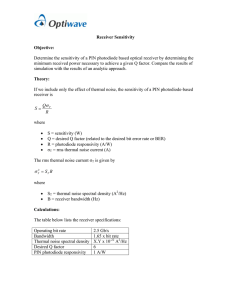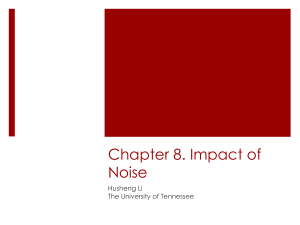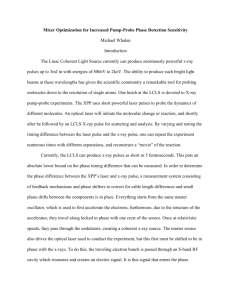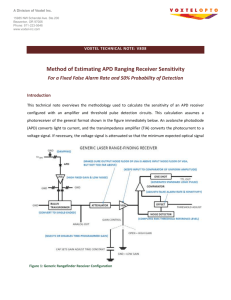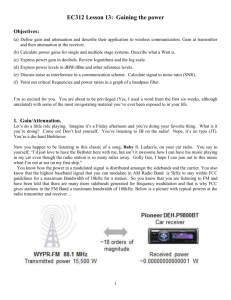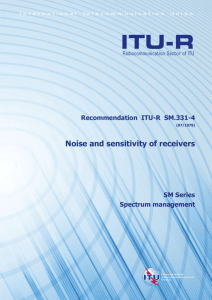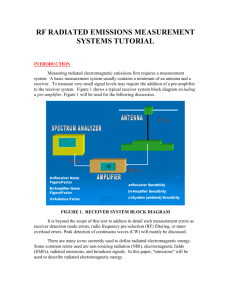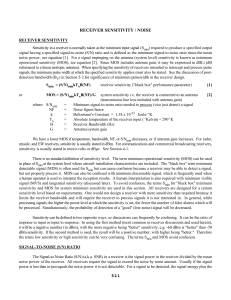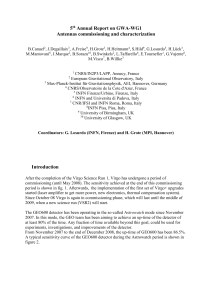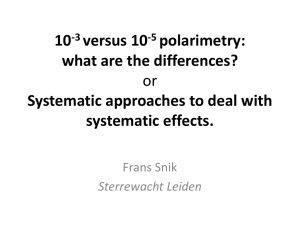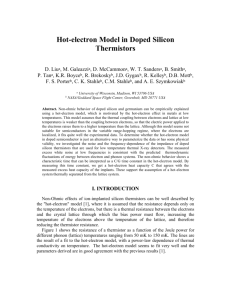Receiver Sensitivity
advertisement
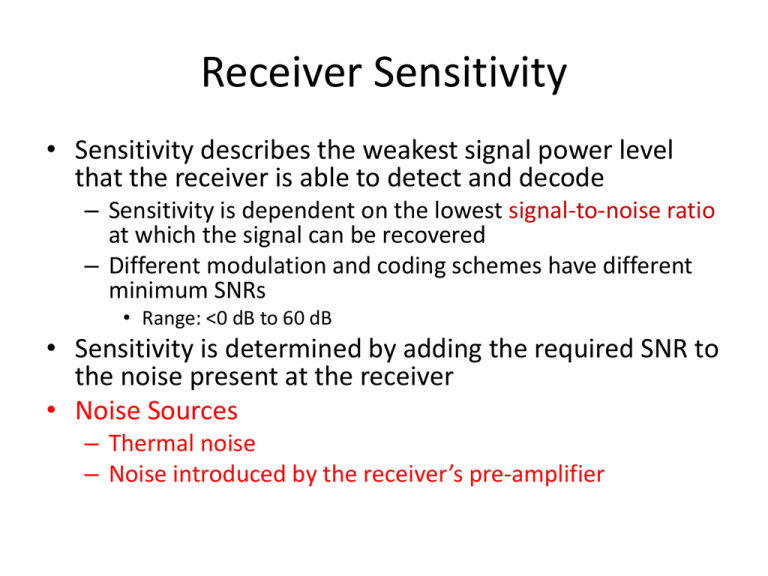
Receiver Sensitivity • Sensitivity describes the weakest signal power level that the receiver is able to detect and decode – Sensitivity is dependent on the lowest signal-to-noise ratio at which the signal can be recovered – Different modulation and coding schemes have different minimum SNRs • Range: <0 dB to 60 dB • Sensitivity is determined by adding the required SNR to the noise present at the receiver • Noise Sources – Thermal noise – Noise introduced by the receiver’s pre-amplifier Thermal Noise • Thermal Noise = N = kTB (Watts) • k=1.3803 x 10-23 J/K • T = temperature in Kelvin • B=receiver bandwidth – So Thermal Noise can be expressed by following formula N = -228,6 dBw + 10 log T + 10 log B – Thermal noise is usually very small for reasonable bandwidths • Noise introduced by the receiver pre-amplifier – Noise Factor = Noise Figure = SNRin/SNRout (positive because amplifiers always generate noise) Receiver Sensitivity Calculation • The smaller the sensitivity, the better the receiver • Sensitivity (W) = kTB * NF(linear) * minimum SNR required (linear) • Sensitivity (dBm) = 10log10(kTB*1000) + NF(dB) + minimum SNR required (dB) Sensitivity Example • Example parameters – Signal with 200KHz bandwidth at 290K – NF for amplifier is 1.2dB or 1.318 (linear) – Modulation scheme requires SNR of 15dB or 31.62 (linear) • Sensitivity = Thermal Noise + NF + Required SNR – Thermal Noise = kTB = (1.3803 x 10-23 J/K) (290K)(200KHz) = 8.006 x 10-16 W = -151dBW or -121dBm – Sensitivity (W) = (8.006 x 10-16 W )(1.318)(31.62) = 3.33 x 10-14 W – Sensitivity (dBm) = -121dBm + 1.2dB + 15dB = -104.8dBm • Sensitivity decreases when: – Bandwidth increases – Temperature increases – Amplifier introduces more noise
